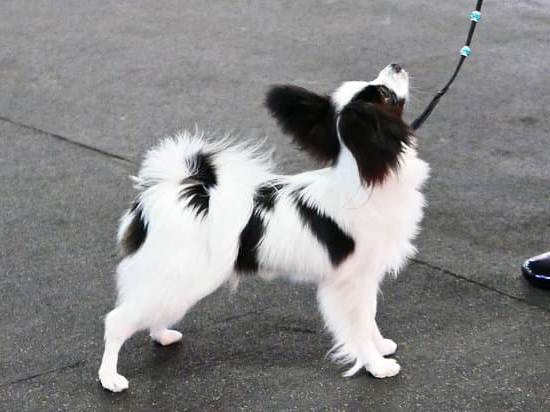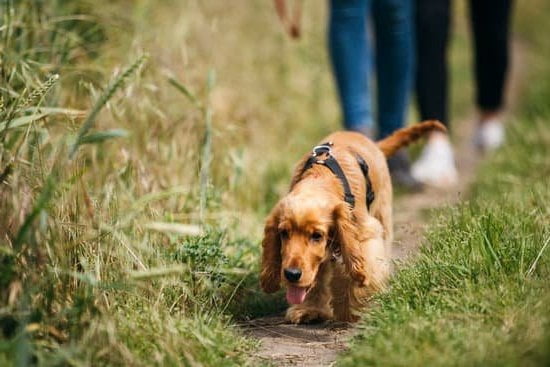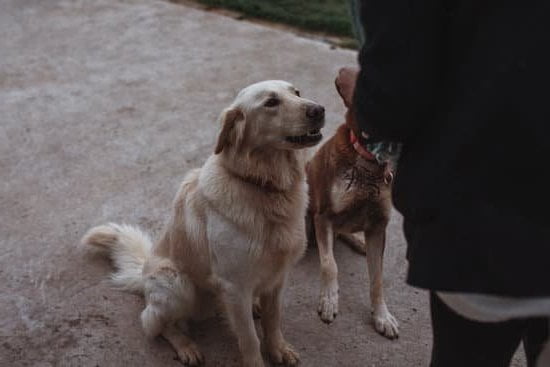Training your dog to go toilet outside is an essential part of owning a pet. In this article, we will explore the importance of outdoor toilet training for dogs and provide valuable tips and techniques for successfully accomplishing this task. Understanding your dog’s bathroom behaviors, creating a consistent bathroom schedule, using positive reinforcement, proper supervision, and utilizing crate training are just a few of the topics we will cover in this comprehensive guide.
Dogs are intelligent animals that thrive on routine and consistency. As responsible pet owners, it is our duty to ensure that our furry companions are well-behaved and follow certain rules, including where they relieve themselves. By training your dog to go toilet outside, you not only maintain cleanliness in your home but also promote good hygiene and prevent any potential health hazards associated with indoor accidents.
In the following sections, we will delve deeper into understanding your dog’s bathroom behaviors and how to create a consistent bathroom schedule. We will also discuss the use of positive reinforcement and rewards to encourage outdoor bathroom use, as well as offer tips for correcting accidents and mistakes during the training process.
Additionally, we will explore how to utilize crate training as a helpful tool in outdoor toilet training. Excited to help you embark on this journey towards successful outdoor toilet training for your beloved canine companion.
Understanding Your Dog’s Bathroom Behaviors
When it comes to training your dog to go toilet outside, it is essential to understand your pet’s bathroom behaviors. Dogs have natural instincts when it comes to relieving themselves, and recognizing these behaviors can greatly aid in the training process. Some common bathroom behaviors that dogs exhibit include sniffing around, circling a particular spot, or pacing back and forth. By being aware of these signs, you can learn to anticipate when your dog needs to go outside.
To help recognize these behaviors, consider keeping a journal or log of your dog’s bathroom habits. Take note of the times when they typically need to relieve themselves and any specific cues they give off before doing so. This will allow you to create a consistent bathroom schedule for your dog, which is crucial for successful outdoor toilet training.
In addition to understanding your dog’s bathroom behaviors, it is important to be patient and observant during the training process. Dogs may have different triggers or signals for when they need to go outside, so being attentive and proactive is key. With consistency and patience, you can effectively train your dog to go toilet outside and minimize accidents indoors.
Here Are Some Tips for Understanding Your Dog’s Bathroom Behaviors
- Observe your dog’s body language before they go potty.
- Take note of any specific cues or signals that indicate a need to go outside.
- Create a consistent schedule based on your dog’s natural bathroom habits.
Remember
- Patient observation is key in understanding your dog’s unique bathroom behaviors.
- Consistency in monitoring their actions will help in successfully training them to go toilet outside.
Create a Consistent Bathroom Schedule for Your Dog
Consistency is key when it comes to training your dog to go toilet outside. Establishing a consistent bathroom schedule for your dog can greatly aid in the outdoor toilet training process. By following a regular routine, you can help your dog learn when and where they are expected to relieve themselves, ultimately leading to successful outdoor bathroom use.
Understand Your Dog’s Bathroom Needs
Before creating a bathroom schedule for your dog, it’s essential to understand their bathroom needs. Different breeds and individual dogs may have varying bathroom habits and requirements. Take note of how often your dog typically needs to go potty throughout the day and at what times. This understanding will help you establish an effective bathroom schedule that aligns with your dog’s natural rhythms.
Establish Set Bathroom Times
Once you have an understanding of your dog’s bathroom needs, establish set times for them to go outside. Dogs typically need to go potty first thing in the morning, after meals, after playtime, before bedtime, and occasionally during the night. Create a schedule that accommodates these times and be consistent with taking your dog out at these designated intervals.
Use Verbal Cues and Commands
When it’s time for your dog to go outside, use verbal cues or commands to let them know it’s potty time. For example, saying “outside” or “go potty” in a cheerful tone can signal to your dog that it’s time to relieve themselves. Consistently using these commands will help reinforce the association between the command and the act of going toilet outside.
By creating a consistent bathroom schedule for your dog and understanding their specific needs, you can effectively train them to go toilet outside. Patience and persistence are crucial during this process as every dog learns at their own pace. With a reliable routine in place, coupled with positive reinforcement, you’ll be well on your way to having a well-behaved and house-trained pup.
Positive Reinforcement and Rewards for Outdoor Bathroom Use
Using Positive Reinforcement to Encourage Outdoor Bathroom Use
When it comes to training your dog to go toilet outside, positive reinforcement is a powerful tool. Dogs respond well to praise, treats, and rewards when they exhibit the desired behavior. Whenever your dog goes to the bathroom outside, be sure to lavish them with praise and offer a small treat as a reward. This will help them associate going toilet outside with positive experiences.
Consistency Is Key
In order for positive reinforcement to be effective, it’s important to be consistent in your approach. Make sure that every time your dog successfully goes toilet outside, they receive praise and a reward. This consistency will help reinforce the behavior and encourage them to continue using the designated outdoor area for their bathroom needs.
Avoid Punishment for Accidents
While positive reinforcement is crucial for successful outdoor toilet training, it’s equally important to avoid punishment for accidents or mistakes. Scolding or punishing your dog for going to the bathroom inside can create anxiety and confusion, ultimately hindering the training process. Instead, focus on redirecting their behavior and providing clear guidance on where they should go toilet.
Using positive reinforcement and rewards is an effective way to train your dog to go toilet outside. With patience and consistency, you can help your furry friend understand the desired behavior and build a strong bond based on trust and encouragement.
How to Properly Supervise and Monitor Your Dog’s Bathroom Activities
Training your dog to go toilet outside is an essential part of owning a pet, as it ensures cleanliness in your home and can also prevent health issues for both you and your furry friend. One crucial aspect of this training process is properly supervising and monitoring your dog’s bathroom activities.
To ensure that your dog successfully learns to go toilet outside, here are some tips on how to properly supervise and monitor their bathroom activities:
- Keep a close eye on your dog: Whenever it’s time for them to go outside, make sure to keep a close eye on them. This will allow you to immediately praise and reward them when they successfully go toilet outside.
- Use consistent verbal cues: When supervising your dog’s bathroom activities, use consistent verbal cues such as “go potty” or “do your business.” This will help them associate these words with the act of going toilet outside.
- Monitor their body language: Dogs often exhibit specific behaviors when they need to relieve themselves, such as sniffing the ground or circling a certain area. By observing their body language, you can anticipate when they need to go outside.
By properly supervising and monitoring your dog’s bathroom activities, you can effectively reinforce the behavior of going toilet outside and set them up for success in their outdoor toilet training.
Remember that successful outdoor toilet training requires patience and persistence. It may take some time for your dog to fully grasp the concept, but with consistent supervision and positive reinforcement, they will eventually learn to go toilet outside reliably.
Tips for Correcting Accidents and Mistakes During the Training Process
Correcting accidents and mistakes is an inevitable part of the outdoor toilet training process. When your dog has an accident in the house, it’s important to remember that punishment is not an effective way to correct their behavior. Instead, focus on positive reinforcement and redirection.
One effective method for handling accidents is to interrupt your dog during the act, then immediately take them outside to finish their business. This helps them understand that going potty belongs outside, not indoors. After they have finished outside, be sure to provide praise and rewards to reinforce the desired behavior.
Another important aspect of correcting accidents is cleaning up properly. Use a pet-specific cleaner to thoroughly clean any indoor accidents, as this will help eliminate lingering odors that may attract your dog back to the same spot.
It’s also essential to remember that accidents are usually a sign that you need to adjust your training approach. Reflect on how long it has been since your dog’s last bathroom break and consider if you need to revisit aspects of their schedule or adjust your supervision. With patience and persistence, you can guide your dog towards successful outdoor toilet training.
| Tips for Correcting Accidents | During Training Process |
|---|---|
| Avoid punishment | Redirect them outside immediately after accident |
| Thoroughly clean indoor accidents | Use a pet-specific cleaner |
How to Use Crate Training to Assist With Outdoor Toilet Training
Crate training can be a valuable tool in assisting with outdoor toilet training for dogs. The use of a crate can help to establish a routine and provide your dog with a designated space for rest and relaxation. When utilized properly, crate training can also aid in preventing accidents indoors and encouraging your dog to hold their bladder until they are taken outside.
To start using crate training as part of your outdoor toilet training regimen, it’s important to select an appropriately sized crate for your dog. The crate should be just large enough for them to stand up, turn around, and lie down comfortably. Introducing the crate in a positive manner, such as placing treats or toys inside, can help your dog view the crate as a safe and enjoyable space.
During the initial stages of outdoor toilet training, it’s essential to supervise your dog closely when they are not confined to the crate. This will prevent them from having opportunities to have accidents indoors and reinforce the importance of going outside to relieve themselves. When you cannot directly supervise your dog, placing them in the crate for short periods can help prevent accidents while also giving them time to rest.
When utilizing the crate as part of outdoor toilet training, it’s crucial to remember that the crate should never be used as a form of punishment. Instead, it should be introduced gradually and associated with positive experiences such as meals and treats. Over time, many dogs come to see their crates as a safe haven within their home environment. With consistency, patience, and positive reinforcement, crate training can significantly aid in teaching your dog how to go toilet outside.
Patience and Persistence
In conclusion, outdoor toilet training for dogs requires patience and persistence from the owner. It is essential to understand the importance of this training to avoid indoor accidents and maintain a clean living environment for both the dog and the owner. Understanding your dog’s bathroom behaviors will help in creating a consistent bathroom schedule, allowing for positive reinforcement and rewards for outdoor bathroom use.
Supervising and monitoring your dog’s bathroom activities is crucial during the training process. This will help in correcting accidents and mistakes promptly, reinforcing the desired behavior of going toilet outside. Additionally, crate training can be used as a tool to assist with outdoor toilet training by creating a safe space for the dog when unsupervised.
It is important to remember that successful outdoor toilet training for dogs takes time, patience, and consistency. Owners should remain persistent in their efforts and continue to provide positive reinforcement while correcting any mistakes that may occur. By following these tips and being dedicated to the process, owners can successfully train their dogs to go toilet outside, creating a happier and cleaner environment for everyone involved.
Frequently Asked Questions
How Do I Train My Dog to Pee and Poop Outside?
Training your dog to pee and poop outside requires consistency, patience, and positive reinforcement. Take your dog outside frequently, especially after meals and naps, and praise them when they go to the bathroom. If accidents happen inside, don’t punish your dog; instead, clean it up without drawing attention to it.
Why Won’t My Dog Go Outside to the Toilet?
There could be various reasons why your dog refuses to go outside to toilet. It could be due to fear of a particular area or object, discomfort with the weather, or simply a lack of proper training. Assess the situation and try to address any issues that may be causing your dog’s reluctance.
How Do You Train a Dog to Tell You It Has to Pee?
Teaching a dog to let you know when it needs to pee involves observing their behavior and setting up a communication system. Watch for signs such as circling or sniffing around and then take them outside immediately.
You can also train them to signal by using bells or scratching at the door. With consistency, your dog will learn how to communicate its potty needs effectively.

Welcome to the blog! I am a professional dog trainer and have been working with dogs for many years. In this blog, I will be discussing various topics related to dog training, including tips, tricks, and advice. I hope you find this information helpful and informative. Thanks for reading!





